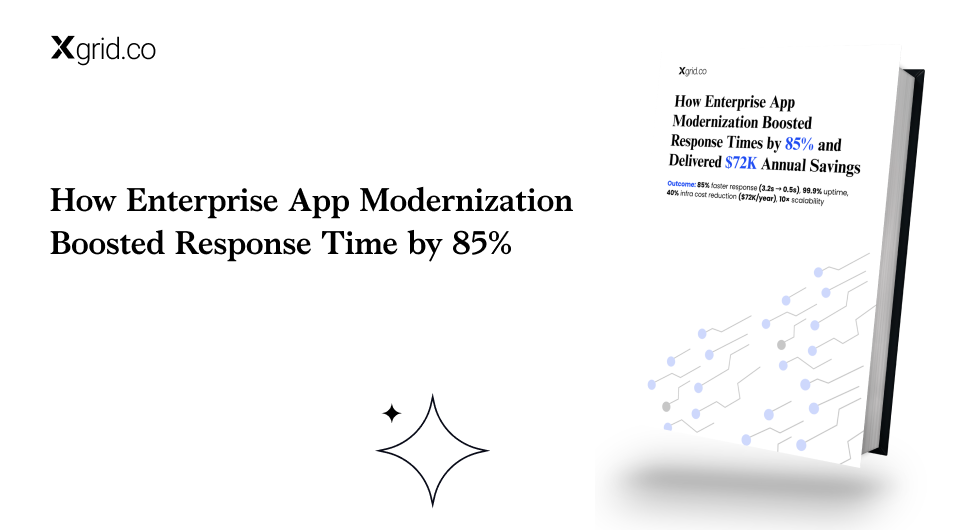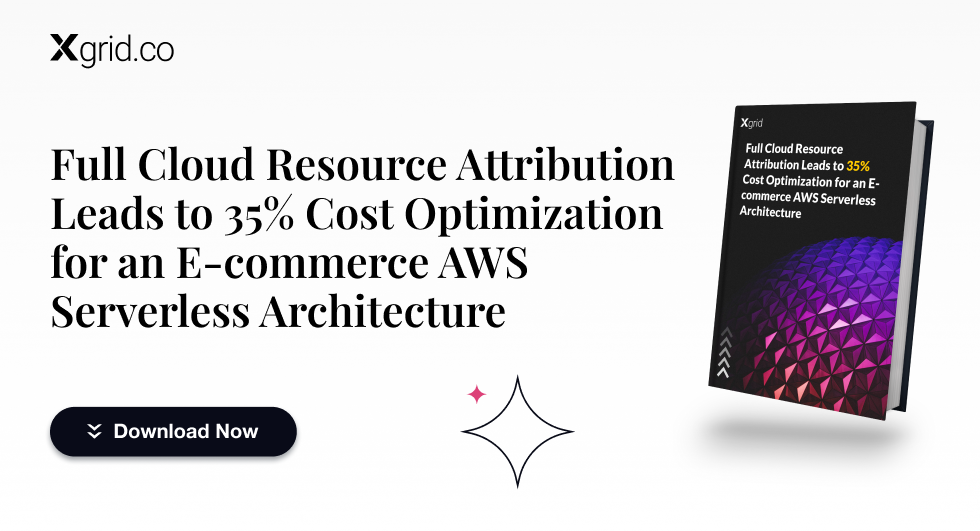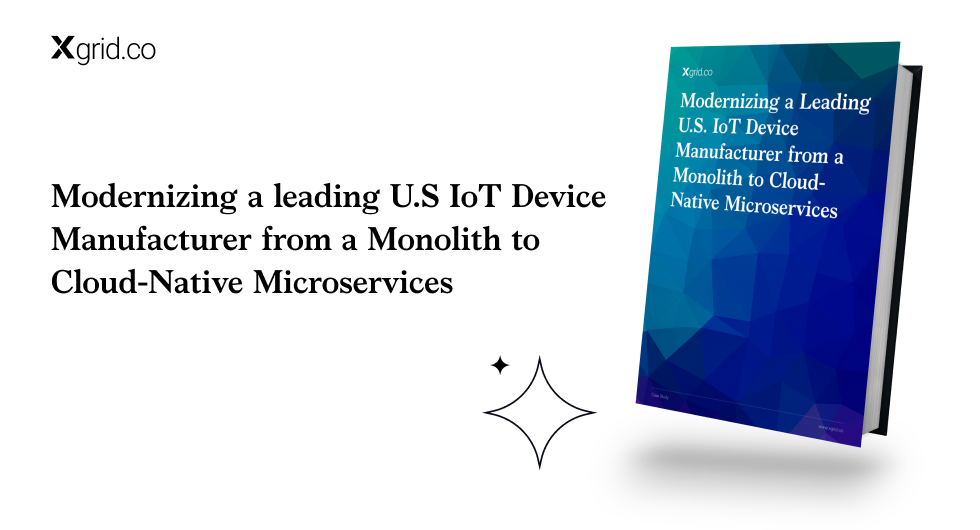How a US-Based IoT Retailer Cut AWS Costs by $125,000/Month with Smart Cloud Optimization
Executive Summary
A U.S.-based market leader in IoT-enabled smart beds and consumer wellness products was facing runaway AWS bills. Monthly cloud spend had skyrocketed to nearly $500K, driven by over-provisioned compute resources, manual provisioning, and idle non-production environments.
The client initially aimed for modest savings of $15K/month — but with Xgrid’s expertise, they achieved 8× that target. Within just one month, spend dropped to $375K/month, a 25% reduction.
Beyond cost savings, we delivered better cloud governance, automated controls, real-time visibility, and a scalable self-service infrastructure platform that empowered engineers and accelerated innovation.
Client Snapshot
- Industry: Smart Devices / Consumer Goods / Retail
- Business Model: Direct-to-Consumer (D2C), both online and retail stores
- Scale: Nationwide footprint with thousands of IoT-enabled smart beds and mattresses
- Objective: Cut rising AWS costs, improve security and governance, and create scalable cloud operations
The Challenge: High Growth, High Costs
The retailer’s growth trajectory was impressive — but cloud costs grew faster than revenue. As the business scaled IoT services and e-commerce platforms, their AWS infrastructure became a tangled web of over-provisioned resources, hidden inefficiencies, and manual processes.
Key pain points included:
- Over-Provisioned Resources: Compute, databases, and Kafka clusters running at far higher capacity than needed.
- Idle Spend on Weekends: Non-production environments left running 24/7, consuming thousands monthly.
- No Early Warning System: No budget alerts or monitoring tools to flag sudden cost spikes.
- Storage Bloat: S3 buckets without lifecycle policies, creating silent cost leaks.
- Engineering Overhead: Every new resource required manual setup, slowing teams and increasing human error.
The result? Cloud waste, rising AWS bills, gaps in governance, and frustrated engineers.
The Xgrid Approach: Turning Cloud Chaos into Clarity
We didn’t just “cut costs” — we built a cost-conscious, scalable, and secure AWS environment that positioned the client for sustainable growth.
1. Proactive Cost Monitoring with CIEM
- Implemented Cost Incident and Event Management (CIEM) to create budget thresholds and real-time Slack alerts.
- Gave teams immediate visibility into spend spikes, enabling quick action before costs spiraled.
- Created a culture of cost-awareness, with engineers now accountable and empowered to act early.
2. Rightsizing & Resource Optimization
- Analyzed utilization metrics across compute, AWS MSK clusters, and databases.
- Downsized and reconfigured services to align with actual demand, eliminating over-provisioning.
- Removed forgotten, unused resources to stop unnecessary charges.
3. Automated Weekend & Off-Hours Shutdowns
- Deployed Cloud Custodian to automatically stop non-production environments during weekends and non-business hours.
- This automation-first approach delivered recurring monthly savings without any manual intervention.
4. Smarter Storage with Lifecycle Policies
- Enforced optimized S3 Lifecycle Policies, configured with cost tiers in mind.
- Reduced storage bloat, lowered spend, and improved compliance with data governance best practices.
5. Self-Service Infrastructure Provisioning
- Built a YAML-driven self-service provisioning platform, enabling engineers to spin up infrastructure via pipelines instead of tickets.
- Reduced engineering overhead, accelerated delivery timelines, and eliminated human error.
- Shifted infrastructure management from a bottleneck to a competitive advantage.
6. Governance, Observability & Guardrails
- Rolled out real-time dashboards for complete visibility into AWS spend and resource utilization.
- Implemented guardrails and governance policies to prevent resource sprawl in the future.
- Aligned operations with AWS Well-Architected Framework best practices for security, resilience, and efficiency.
Results: Numbers That Speak for Themselves
| Metric | Before | After | Impact |
| Monthly AWS Spend | ~$500K | $375K | $125K savings (25%) |
| Cost Reduction Target | $15K | $125K | 8× exceeded target |
| Non-Prod Environments | Always running | Automated shutdowns | Recurring savings via Cloud Custodian |
| Resource Provisioning | Manual & error-prone | YAML-based self-service | Faster, reliable deployments |
| S3 Lifecycle Policies | Misconfigured | Optimized | Lower storage costs + better compliance |
Golden Nuggets: What We Learned
- Automation = Consistency: Cloud Custodian was pivotal in enforcing policies across environments.
- Self-Service = Agility: Empowering engineers reduced dependency, sped up delivery, and lowered costs.
- Culture Shift = Long-Term Wins: With dashboards and CIEM alerts, teams became proactive cost managers, not passive users.
Why This Matters for Enterprises
This project highlights that AWS cost optimization isn’t just about saving money. It’s about building:
- Governance: Preventing unmanaged resources from creating risks.
- Resilience: Automated shutdowns and lifecycle rules reduce operational burden.
- Scalability: Self-service platforms allow teams to innovate faster without compromising security.
- Compliance: Policies and automation improve adherence to industry standards.
For mid-to-large enterprises in e-commerce, retail, and IoT, this is a blueprint for achieving financial efficiency, operational agility, and sustainable cloud governance.
The Xgrid Advantage
By combining deep AWS expertise, automation-first strategies, and scalable platforms, Xgrid delivered far more than cost savings. We helped the client build a smarter cloud culture — one where efficiency, governance, and agility drive long-term success.
✅ $125K/month saved
✅ 8× cost savings target achieved
✅ Governance, compliance, and security enhanced
✅ Teams empowered with faster, self-service provisioning
This is what happens when cloud cost optimization meets smart cloud engineering — the Xgrid way.




